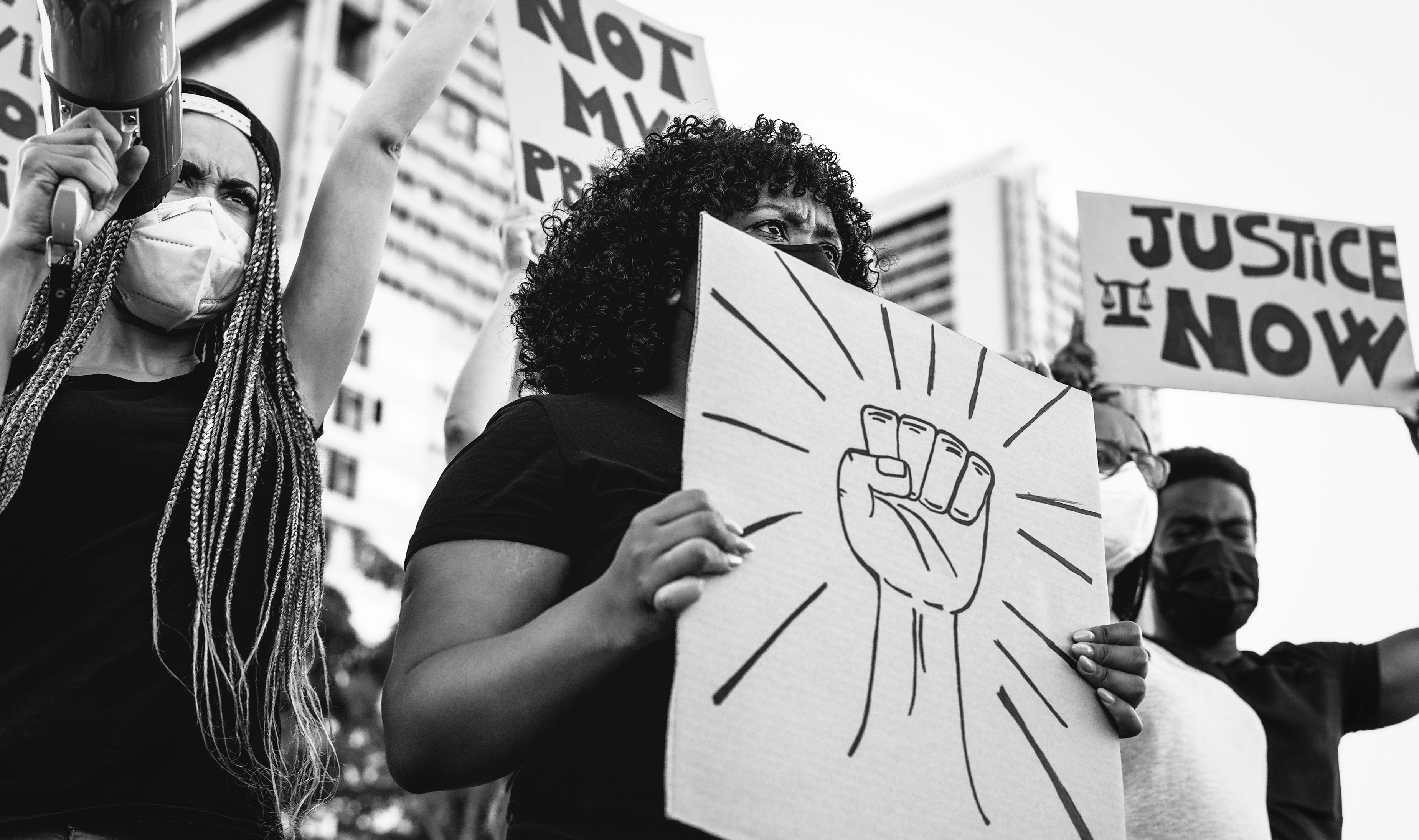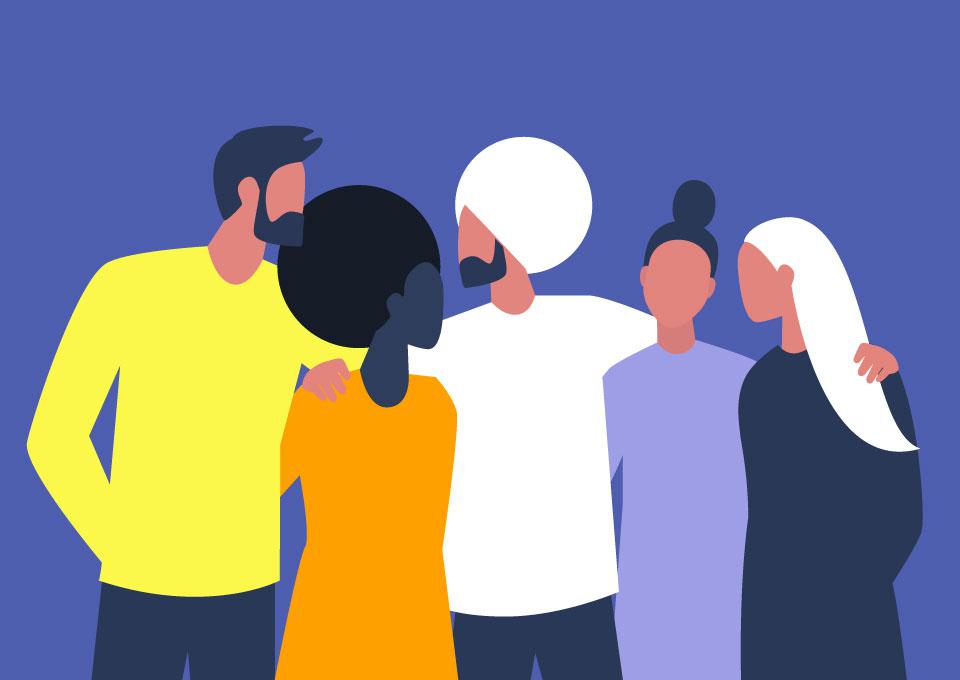COVID-19, Racism, and Philanthropy
As the founder and president of Marga Inc., a consulting firm providing strategic advice and research to philanthropic initiatives and community partnerships, I have led coordination of the Race and Equity in Philanthropy Group (REPG), which engages a cluster of member foundations in strengthening policies and practices on racial equity, diversity, and inclusion. Through that work, Marga Inc. has collected the information and examples shared here.
The COVID-19 pandemic has changed the world. It is a crippling disaster.
As is often the case during and after disasters, philanthropy has stepped in. Over recent weeks, we have seen foundations and their partners create numerous relief funds and explore new policies to move resources more quickly or make grants and donations more flexible for recipients. And we have seen foundations raise their voices to highlight injustices during the crisis as well. More recently, some foundations have been speaking out regarding the events surrounding the deaths of George Floyd and other unarmed Black citizens and the broader racial injustices these incidents represent.
COVID-19 and Structural Racism
This pandemic is no ordinary disaster. It is creating, as so many have said, “a new normal.” While it has ushered in some new realities, it has also highlighted existing inequities—one of which is longstanding structural racism.
As data begins to become more available, we are seeing that people of color are more likely to be affected by the pandemic—they are contracting and dying from the virus at higher rates, as they disproportionately reside in densely populated metropolitan areas that increase the risk of exposure to the coronavirus, and those who contract the virus face worse health outcomes than their white counterparts.
Social distancing and working from home have been vital ways in which the spread of the virus has been limited to some degree. But many lower income people of color are not in a position to practice distancing if they don’t have much space at home, or they live with numerous others in those quarters. Perhaps they do not have homes at all. Mass incarceration has disproportionately filled prisons with people of color living in close quarters in which the virus can spread.
Additionally, many of the jobs that cannot be done at home and are considered essential, such as service employees in grocery stores or transportation workers, are disproportionately occupied by Black and Latinx employees. These workers are true champions for placing themselves at risk to keep things going. They deserve tremendous gratitude. Native American communities have been particularly devastated by COVID-19 as well.
Discrimination, xenophobia, and ignorance are components of racism that have also surfaced around COVID-19, as demonstrated in the rise in hate crimes against Asian Americans, who are being blamed for the virus.
In addition, what is unquestionably a public health crisis is also an economic one. As jobs disappear and small businesses go under, populations with limited savings and limited career flexibility cannot withstand the loss of even a single paycheck. In the context of structural racism, again, communities that have been historically underserved and disenfranchised are most vulnerable.
One of the greatest disparities by race is around wealth, beyond income. Crises put a strain on communities with the least wealth (e.g., savings). So many in communities of color experienced dramatic losses in wealth during the financial crisis over a decade ago and were just starting to recover. This pandemic worsens conditions for those already vulnerable conditions.
As the pandemic has exacerbated existing inequities in a public health and economic crisis, a third crisis of racial injustice has converged with our experiences around COVID-19. Again, the very recent murders of George Floyd, Breonna Taylor and Ahmaud Arbery are not actually new. They are emblematic of a history of systemic violence against communities of color, and Black people in particular. There have been many protests following specific acts of racial injustice throughout this century, but none as widespread and multiracial as the daily and nightly civil unrest of late May and early June.
It is also critical to examine the distribution of resources by financial institutions and by philanthropy during this multidimensional crisis. Who gets the money? At this moment, there is debate and inquiry around how the smallest businesses that need funding the most are not getting much, while larger businesses are figuring out ways to get more funding. These are familiar dynamics, with a racial dimension to the distribution of resources in philanthropy. Smaller organizations led by and serving communities of color that are in greatest need are often disconnected from larger foundations and greater philanthropic resources.
As we look at the inequities illuminated in the pandemic, philanthropy absolutely must explore how grantmakers can substantially expand giving to organizations led by and serving communities of color. It is particularly important to serve representative organizations that provide a voice for their constituents and raise awareness about the realities confronting communities and advocate for policy change.
The many actions taken by foundations and donors recently are very important. But it is crucial to expand the number and range of philanthropic activities that directly address the racial dynamics that are increasingly apparent in the context of the COVID-19 pandemic as well as the racial injustices around repeated police brutality. The clear worsening of racial inequity demonstrated throughout this crisis only underscores the need for foundations to make it a priority in all aspects of their work well beyond the near future. If foundations want to contribute to improving the health and economic conditions that have influenced the gravity of the pandemic’s impact, they will have to consider crucial racial dynamics.
Philanthropy Together for Change
It is encouraging that many foundations have been actively engaged during the pandemic, focusing on the various racial equity considerations evident in the crisis. Because racial equity is complex, there is not a one-size-fits-all approach.
Below are a variety of approaches some funders are taking that may serve as helpful examples for others.
Advocating for immigrant communities
A group of 40 California-based foundations signed a joint letter to Governor Gavin Newsom elevating the need to support and protect immigrant Californians and their families, who are excluded from federal relief and ineligible for state safety-net programs.
Creating rapid response funds and giving grants to support communities of color and other vulnerable communities.
(A complete list of the many recently created crisis response funds can be found on Candid’s regularly updated list of funding opportunities on its coronavirus popup web page.)
- The California Wellness Foundation is committing $3 million in grants to support the most vulnerable communities and people in the state. Additionally, they are providing core support grants to small and mid-size organizations led by people of color.
- The James Irvine Foundation board approved $22 million to support grantees that are critical to California’s efforts to protect and advance low-wage workers and to help other grassroots organizations in California.
- The East Bay Community Foundation is allocating $1 million from its endowment to support provide support for the most vulnerable communities in the East Bay.
- The Ford Foundation, along with several other funders, launched the Families and Workers Fund to serve the workers, families, and communities most devastated by the economic and health crises resulting from the COVID-19 pandemic.
- The Seattle Foundation, in partnership with a coalition of philanthropy, government, and business partners, started the COVID-19 Response Fund. The fund, which is intended for nonprofits that are working on the frontlines, prioritizes communities of color, undocumented immigrants, low-income residents, limited English proficient residents, among others. So far the fund has galvanized $21 million.
- The San Francisco Foundation has created the SFF COVID-19 Emergency Response Fund for capacity building grants to address worker support, preventing homelessness, providing renter protection/housing security, ensuring food security, and addressing racial bias. It is also tracking race and ethnicity data of grantees and populations served.
- The Langeloth Foundation has created the COVID-19 Rapid Response Fund to address organizations’ urgent and critical needs.
- The California Endowment announced a $5 million COVID-19 Response Plan to provide for the essential needs of highly vulnerable populations in California.
- The Walton Family Foundation approved using part of its annual grant budget for disaster relief to provide direct support for existing grantees. Many of these are education grants to target under-resourced schools where students of color often comprise the majority of the student population.
- The Winthrop Rockefeller Foundation has relied on local philanthropic partners to provide grants to individuals for basic needs and to nonprofits providing direct services. recognizing that many businesses in communities of color have limited access to capital, the foundation has also provided $400,000 directly to CDFI (Community Development Financial Intsitutions) partners to provide loans and grants for small businesses
- The Lumina Foundation designated two contingency funds totaling $1.4 million to address the needs of national partners and to fund the work of local nonprofits in Indianapolis.
Denouncing discrimination against Asian American and Pacific Islander communities
Several foundations have endorsed the call to action from Asian Americans and Pacific Islanders in Philanthropy (AAPIP) entitled “Open Letter to Philanthropy: The Cure to Viral Racism is Within Our Hands,” which denounces the racism accompanying COVID-19 that is targeting Asian American communities.
Focusing public attention on structural racism and racial inequities
- The Winthrop Rockefeller Foundation’s equity officer, the Rev. Shantell Hinton Hill, wrote an article titled, “Two Pandemics: COVID-19 and financial insecurity,” advocating for ALICE (Asset Limited, Income Constrained, Employed) families in Arkansas during the COVID-19 pandemic.
- W. K. Kellogg Foundation president and CEO La June Montgomery Tabron spoke in a tele-town hall convened by the National Association for the Advancement of Colored People (NAACP) about children and families and how the impact of COVID-19 was already being felt in communities of color.
- The Lumina Foundation’s vice president of strategic impact, Dr. Courtney Brown, wrote a blog titled “Readying for the Future: COVID-19, Higher Ed, and Fairness,” which examines how racial fairness remains a major issue as COVID-19 challenges students, educators, and colleges around the world.
- The Annie E. Casey Foundation created a blog post titled, “Six Results Count Skills for Leaders Responding to COVID-19,” identifying tools and skills that leaders serving children, families, and communities can use to maintain a focus on achieving equitable results during the pandemic.
Policy advocacy, and community organizing
- The San Francisco Foundation is planning to weigh in on key policy issues, as it sees this as one of the most important tools it can use to advance racial equity and economic inclusion in the Bay Area.
- The California Wellness Foundation will commit $1 million to community clinics and the associations that advocate for them.
- The East Bay Community Foundation’sCOVID-19: “Just East Bay” Response Fund will target community groups that put policy and organizing at the core of their work and prioritize underserved populations.
- The James Irvine Foundation, as part of the Priority Communities grantmaking initiative, is focusing on building more inclusive and equitable economies in several places.
- The Annie E. Casey Foundation has provided policy resources, which elevate the needs of youth, families, and communities of color, to help grantees influence and educate federal legislators to inform relief bills.
Promoting power building strategies
- A Council on Foundations Pledge, “Call to Action: Philanthropy’s Commitment during COVID-19,” encourages grantmakers to actively loosen restrictions on their grants during the crisis, which can be especially important for smaller community-based organizations.
- San Francisco Foundation is providing technical assistance and capacity building tools for nonprofits and community organizations in the Bay area around financial health, self-care, virtual work, and accessing Federal relief funds.
Going Forward
One way foundations should deepen communication with communities of color is through existing networks that have been organizing people of color in philanthropy and raising awareness about racial equity, such as the ABFE, Hispanics in Philanthropy, Asian Americans and Pacific Islanders in Philanthropy, and Native Americans in Philanthropy, among others.
COVID-19 has revealed the depth of persistent racial inequities, which has made the array of existing resources in philanthropy even more relevant to helping foundations contribute to social change. Change Philanthropy’s assessment tool can help foundations understand the state of their current policies and practices and the breadth of considerations as they imagine the work required to become more inclusive and equitable. The Philanthropy Initiative on Racial Equity (PRE) is another resource that has been helping foundations bring a racial equity lens to their work. United Philanthropy Forum’s Racial Equity Committee has been helping philanthropy-serving organizations build capacity to help their foundation members develop programming on racial equity.
The coronavirus pandemic has exposed structural racism we already knew about, and the need for philanthropy to directly address these inequities has been longstanding. But if anyone needed an additional reason to prioritize racial equity in philanthropy, the rationale is upon us. In this pandemic, its impacts, and aftermath, we will need foundations to use all the tools at their disposal. This will include greater funding to organizations led by and serving communities of color and will also require foundations and donors to reflect on themselves as civic actors—as institutional change agents willing to raise awareness about the racial dimensions of this crisis and advocate for change.
Persistent acts of police brutality and racist violence that have especially impacted Black communities over generations have been painfully animated in recent events. While each incident involves individuals, the context is systemic racism. The lack of accountability of the perpetrators of such acts demonstrates the structural racism that supports and even encourages these behaviors. Foundations will have to challenge these systems in order to be relevant, and support the advocacy and community organizing to dramatically reform the criminal justice system and the racism embedded within it.
As the impact of COVID-19 on communities of color will be longstanding, philanthropy will be faced with a continued challenge. And as the calls for justice in the face of recent racist murders increase, philanthropy is faced with another responsibility. Philanthropy will have to make a sustained commitment to racial equity, racial justice, and communities of color in order to truly have an impact.
Certainly, philanthropy alone will not transform historically persistent inequities. But philanthropy can use its influence—both money and power—across sectors to authentically collaborate with communities that are most impacted to effect real change.




